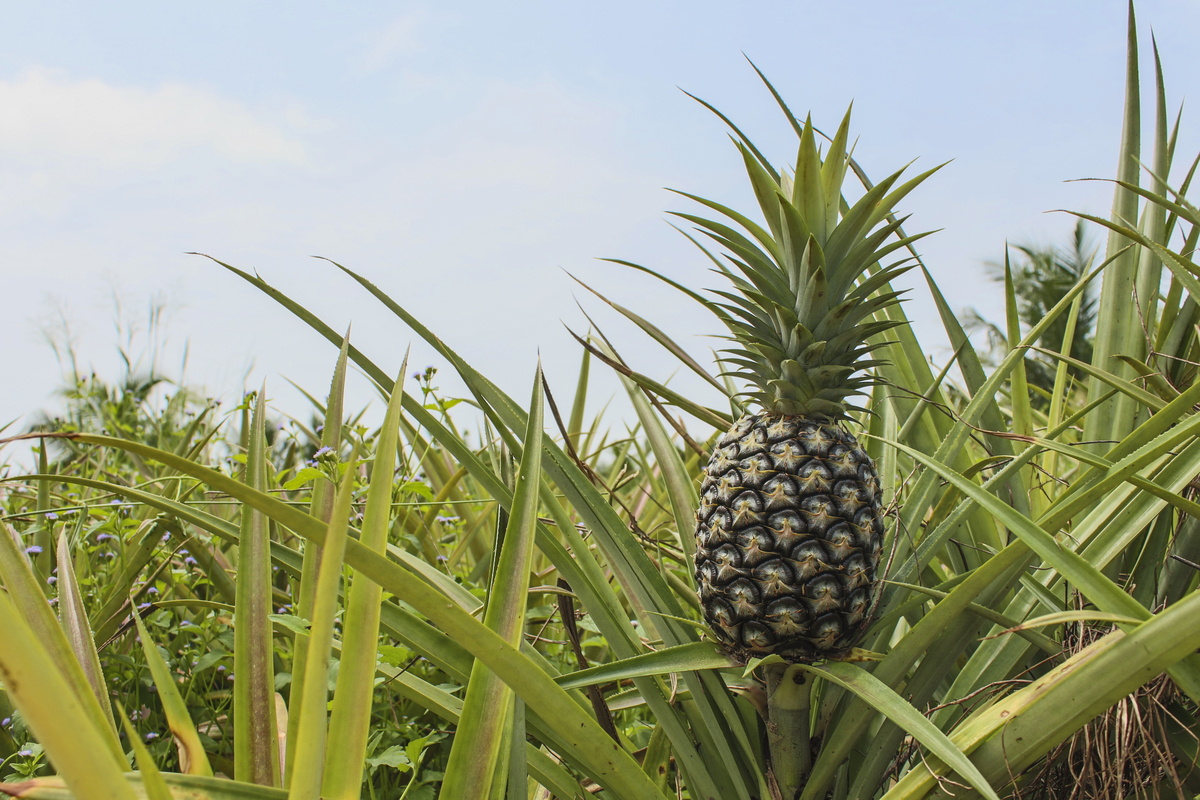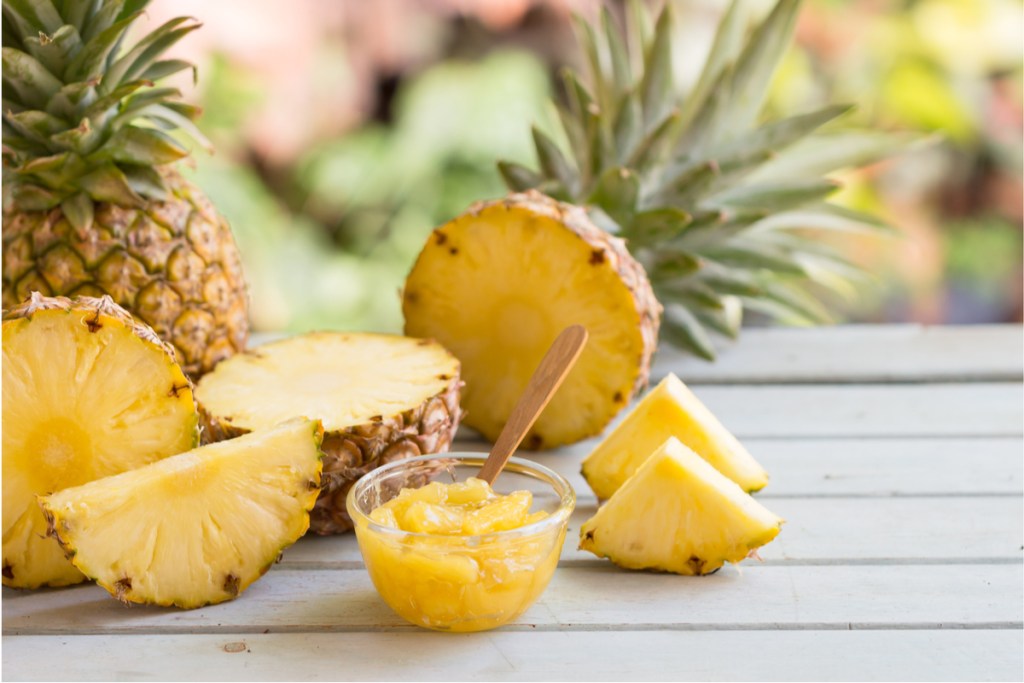
Pineapples are complicated.
The pineapple is neither a pine nor an apple but got its name because of the rough, pine cone-like exterior and sweet, juicy interior. Because of its tangy, acidic flavor, some people wonder if pineapple is considered a citrus fruit. It is not, and unlike pines, apples, and citrus, it doesn’t grow on a tree. Although pineapples are nearly synonymous with Hawaii, they have only been cultivated there recently.
Is pineapple a citrus?
Pineapple, Ananas comosus, is a member of the botanical family Bromeliaceae (Bromeliads). Oranges, lemons, grapefruits, and limes are members of the Citrus genus, which is in the Rutaceae (Rue) family. Both pineapples and citrus produce juicy fruits that are known for high levels of vitamin C, but botanically they are unrelated.
Pineapple is a bromeliad indigenous to South America, where it has been cultivated for centuries. Christopher Columbus brought pineapples to Europe after finding them on the island of Guadalupe during his second voyage in 1493. Although the sweet, juicy fruit was an immediate sensation, it would take more than a century before Old World horticulturists would unlock the secrets of growing it. Nowadays many gardeners consider pineapples to be one of the easiest tropical fruits you can grow.
Choosing the perfectly ripe pineapple
As you check out the produce section in your local grocery store, it can be difficult to know which pineapple is ripe. Look for plump, fresh-looking fruits with healthy, green foliage and a yellow-green shell exterior. The body should be firm, with a slight bit of softness when squeezed. It should be heavy relative to its size. Ripe fruits produce a sweet smell at the base — not “no smell” and not a fermented aroma.
Pineapples offer an amazing flavor profile that lends itself to a huge diversity of dishes. It can be used fresh, frozen, dried, juiced, or cooked. The natural sweetness adds to desserts and accentuates savory dishes. The juice helps to tenderize meats while imparting a rich depth of flavor when used in marinades.

Health benefits of pineapples
Pineapples support a healthy diet by providing a wealth of vitamins and minerals. They are especially high in vitamin C and manganese. They are also a good source of antioxidants that may help reduce the risk of chronic diseases, including heart disease, diabetes, and cancer. They contain the enzyme compound bromelain, which aids digestion of proteins. And, pineapples also boast anti-inflammatory and immunity-boosting properties.
Bromelain is an enzyme extract of various parts of the pineapple plant. In pill and tablet form it is classified as a dietary supplement in the United States. It has also been used for topical creams. Studies have suggested that bromelain may provide some relief for those suffering from osteoarthritis, cardiovascular disease, asthma, chronic sinusitis, colitis, burns, and cancer. But the concentrated form of bromelain thins the blood and has been linked to allergic reaction in some allergy sufferers. Be sure to consult your doctor before taking this or any supplement.
Grow pineapples at home
Although they are adapted to grow in the tropics, pineapples are fun to grow as indoor/outdoor house plants in temperate climates. They require a sunny location and temperatures ranging from 75° to 90°F. The easiest way for gardeners to begin growing them is by either purchasing a plant from a local nursery (they may be seasonally available), or by rooting out the leafy crown of a grocery store pineapple.
To root a pineapple crown, choose a ripe fruit with healthy green leaves. Grasp the crown near where it attaches to the body of the fruit and twist it off. Remove the lower two inches of leaves and then allow the crown to dry out for two days. Place the base of the crown in a glass or jar of warm water with only the leafless part submerged. Keep it in a warm location with bright, indirect light, changing the water every two or three days. Roots will begin to develop in one to two weeks. When the roots are about three inches long, plant it in a three gallon container. Two months after potting up the plant, move it to direct sunlight.
With proper care and some luck, your pineapple may fruit 18 to 24 months after propagation. Maintain maximum sun exposure and warm temperatures year-round. Provide consistent moisture, allowing the potting mix to dry at the surface between watering. When new foliage begins to emerge, start feeding weekly with half-strength liquid 20-20-20 fertilizer, applied as a foliar spray.
Meanwhile, if you’re interested in learning about fruits with citric acid – pineapple being one of them – just read on further!



